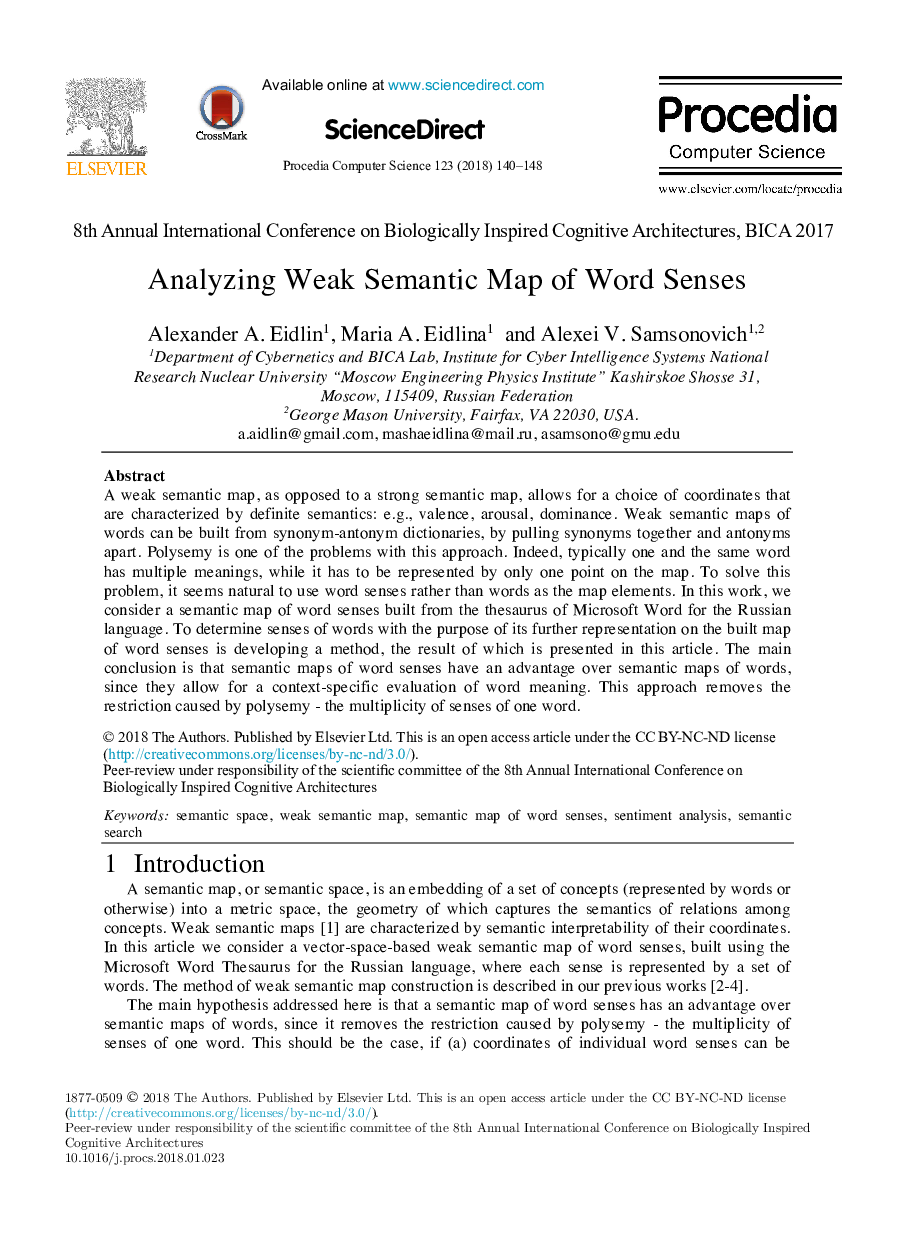| Article ID | Journal | Published Year | Pages | File Type |
|---|---|---|---|---|
| 6900827 | Procedia Computer Science | 2018 | 9 Pages |
Abstract
A weak semantic map, as opposed to a strong semantic map, allows for a choice of coordinates that are characterized by definite semantics: e.g., valence, arousal, dominance. Weak semantic maps of words can be built from synonym-antonym dictionaries, by pulling synonyms together and antonyms apart. Polysemy is one of the problems with this approach. Indeed, typically one and the same word has multiple meanings, while it has to be represented by only one point on the map. To solve this problem, it seems natural to use word senses rather than words as the map elements. In this work, we consider a semantic map of word senses built from the thesaurus of Microsoft Word for the Russian language. To determine senses of words with the purpose of its further representation on the built map of word senses is developing a method, the result of which is presented in this article. The main conclusion is that semantic maps of word senses have an advantage over semantic maps of words, since they allow for a context-specific evaluation of word meaning. This approach removes the restriction caused by polysemy - the multiplicity of senses of one word.
Related Topics
Physical Sciences and Engineering
Computer Science
Computer Science (General)
Authors
Alexander A. Eidlin, Maria A. Eidlina, Alexei V. Samsonovich,
